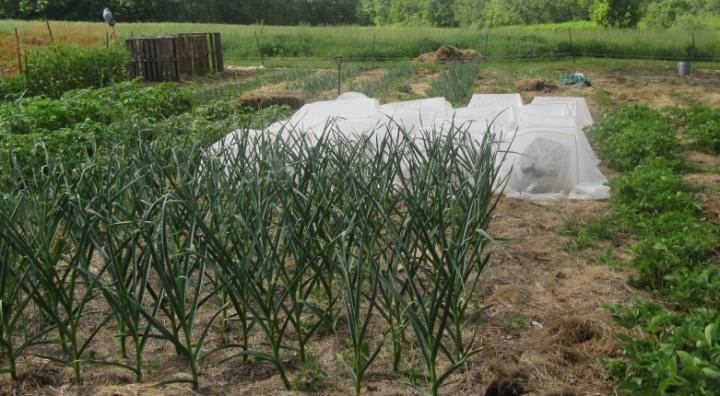Interested in a simpler, more natural way of living?
Be forewarned: We are not talking those homesteads featured in gorgeous full-color magazine spreads promoting the virtues of a simple life in the country.
The aim is to live within your means as sustainably as possible, and in the process, stay as healthy as possible in body, mind, and spirit.
It's closer to mimicking the Depression-era philosophy: “Use it up, wear it out, make it do, or do without.” I’d also add, “Ad hoc, on the fly, extemporaneously, and opportunistically.
Result? Let's say, “occasionally breathtaking, but often not pretty.”
Simplifying Life
- Landscaping with wildflowers? Of course! Fortunately we neither plant nor tend them; nature does all the work.
- In spring, our lawns and field are dotted with dandelions and wild violets, and soon, the clovers.
- By midsummer, we have clumps of flowering motherwort, coves of milkweed, queen Anne’s lace, yarrow, cinquefoil, yellow loosestrife, buttercups, and boneset.
- Then comes Joe Pye weed goldenrod, and fall asters--purple, white, and yellow.
- The flowers aren’t organized and massed for public display, yet each one attracts its own species of pollinating insects, butterflies, and/or hummingbirds. Many appear in bouquets on the kitchen table. Eventually, the seedheads and foliage turn brown and die back. Generally not pretty.
- Those big rolls of discarded carpet lounging in the back of our 35-year-old pickup? They’re last week’s exciting haul from the Town Dump. We slice them up with an old steak knife and position them strategically in my gardens as weed-prevention, sometimes with a thick layer of newspapers under the carpet. The carpet scraps (and also big chunks of cardboard) keep weeds from shorting out the woodchuck-deterring electric fence, and from sprouting up between the asparagus rows and around the blueberry plants.
- See that big pile of thin pine slabs over by the henhouse? We hauled those home from our neighbor’s sawmill. We’ll break them up into small pieces and store them in 55-gallon drums in the shed, where they stay dry for use as kindling during the winter months. Meanwhile, they continue drying in the summer sun.
- Look at all those blackberries! One year, a huge bunch of common orange daylilies appeared at the edge of our backyard pond. They framed the pond beautifully in mid-July, so we carefully mowed around them.
A couple of years ago, wild blackberries began popping up here and there within what by then had become a very large spread of daylilies. I said I would, but I never got around to trimming them out. This year, they’ve totally obscured the view of our peaceful pond from the house. But voila! a gorgeous mass of white blossoms appeared in early July (see photo), and now, such berries! We’ve already filled one large freezer bay with frozen blackberries, with weeks more picking to come. Combined with another batch of the thorny bushes behind the woodshed, I’d say we’ll harvest and freeze 50 quarts or more of berries, with as many eaten fresh, in pies, and jam.
- Three iron bedsprings recycled from the Town Dump’s scrap metal pile have just come into their own, set up in the bays of our shed to support our onions as their tops dry down.

- You’ll see dozens of U-shaped wires hanging from hooks in the shed. These came from lawn and roadside political signs. They make terrific support structures for row covers or plastic netting to screen out insect pests (see photo, where they support covering for broccoli and Brussels sprouts seedlings). They eventually get too rusty to use, but every fall brings on a new crop. I expect good pickings in November after the presidential election.
- And yes, those are clumps of human hair you see wafting around on the lawn. We cut each other’s hair, and had an outdoor barbering session this morning. Human hair decomposes rapidly and adds nitrogen to the soil (not that we intentionally fertilize our lawns).
There’s a lot more to see and explain, and we haven’t even gone inside. But duty beckons.
I do look longingly at those country-living magazine spreads that represent the epitome of aesthetic refinement and homemade elegance. But long ago, I had to accept that if we did have the time to go for elegance (indoors or out), we wouldn’t have the money for the tools and supplies, not to mention the hired labor needed to keep it all so tidy. And if we had the money, we’d be working too many hours to keep up with the daily work of our food-intensive horticulture.
So, we settle for some paid work and some extra time, but not enough of either for much in the way of aesthetic refinements.
But, hey! We’re trendy. In the idiom of the day, we’re lifehackers.
